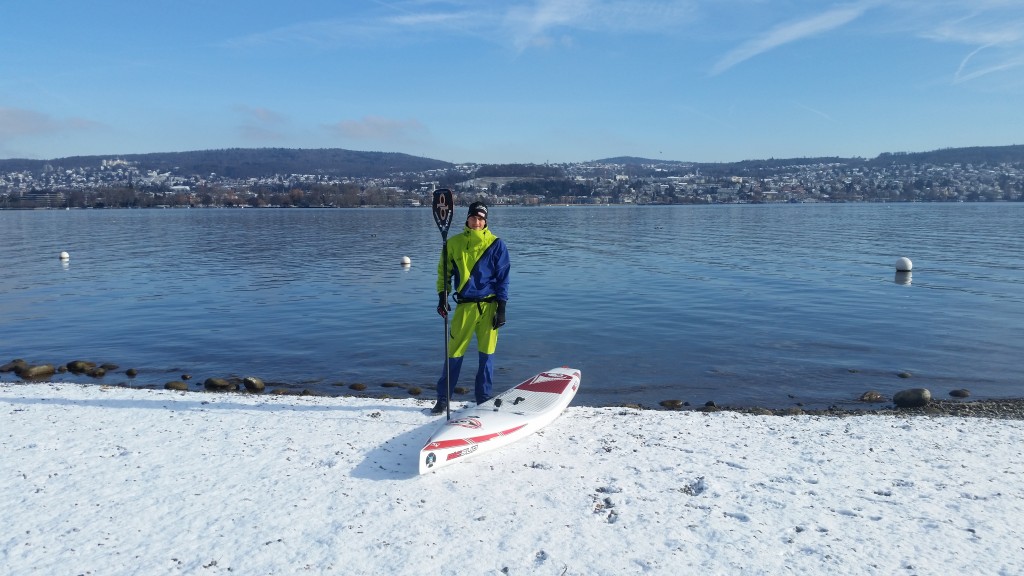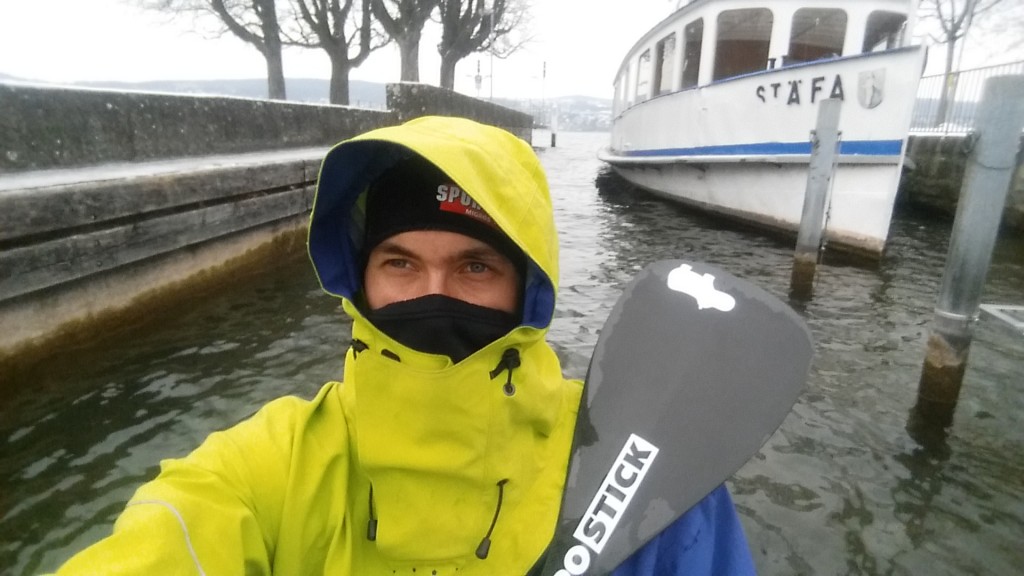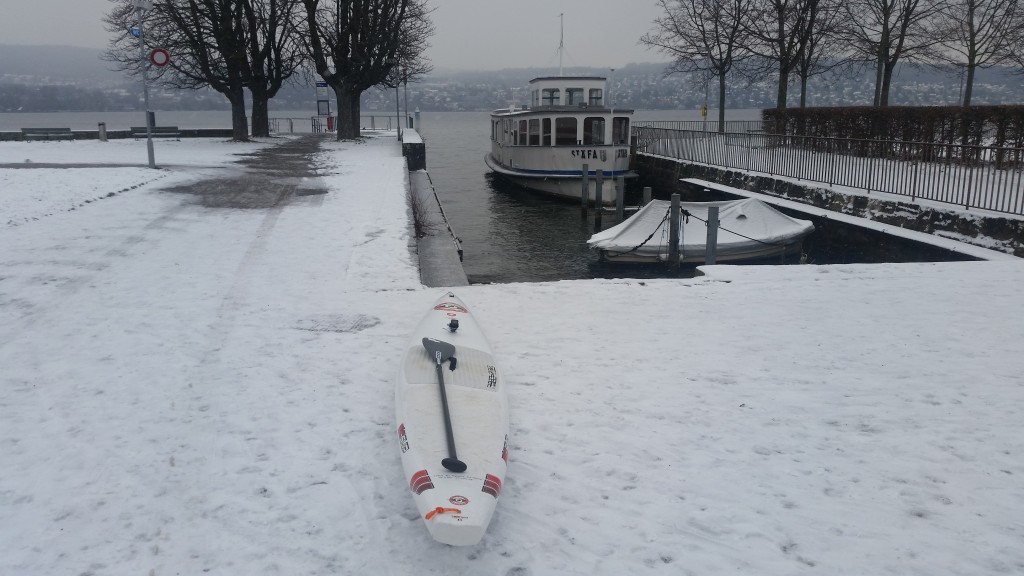So when talking to people these days one of the top questions I get is: How do you train during winter? Do you still paddle?
Let’s take a closer look at this. Obviously I still paddle during winter, but how is the question.

In my experience you better once in a while admit that it is to cold, wet or windy for a paddle and stay indoors. Being sick for a week will cost you a lot more than a well compensated missed paddle session. Good possibilities to compensate for missed paddletime are for example swimming, running, indoor cycling, indoor rowing, or, if you have the possibility, a stand up paddle ergometer. I will talk about the benefits and the different types of crosstraining in a future post. Still my sport is SUP and I try to balance as much water training as possible with as less risk of getting a cold as possible. How that?
First: If you really want to paddle gear up! For your own safety newer go for a paddle in winter without the proper clothing. This includes: Boots, drysuit or at least a 5mm neopren suit. Plus depending on the conditions and the area a leash and/or a PFD. A breathable drysuit is my choice here because it gives you protection from the cold water while leaving you all the mobility you need. When paddling in winter I strongly recommend you to take your cellphone too. In dangerous situations during winter time is an important factor, a distress call may be your best option. And obviously you can take selfies for your instagram account. (a good german article on winter paddling safety: hanseatenbande)

Second: Stay warm, but do not overheat! For normal flatwater training I use running or cross country skiing gear in addition to my drysuit and boots. The reason is that you wanna keep warm, but in the same time you want to avoid overheating and sweating to much. Therefore I use breathable textile beanies, gloves and neckwarmers and not neoprene ones – obviously only when I paddle in a way that I won’t fall. If you expect to fall you should always go for gear that stays warm when wet. Additionally layer your protection in a way that you can add or remove a part to adjust your body climate. For example I always keep the neck-warmer and the hood of my drysuit down while paddling intervals so that I sweat less and I can put them up for the cooldown to get additional protection.
Third: Manage the intensities. Nothing is worse in winter than paddling on a high intensity level shortly before standing around for a while. Keep in mind to keep moving during training, and plan your sessions in a way that you will be able to change quickly after intensive paddling. So if you have a technique block and an interval block in a training you should to the technique part at the beginning, so that you are able to go change quickly after the intervals and a short cool down.
So paddle on and stay healthy and safe!
